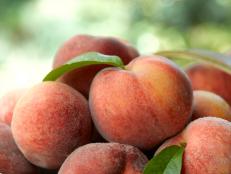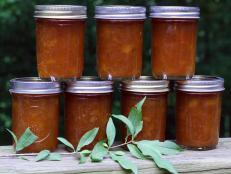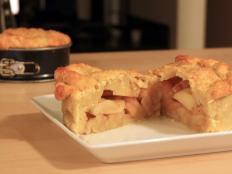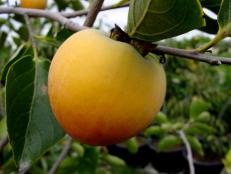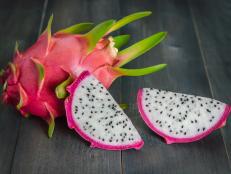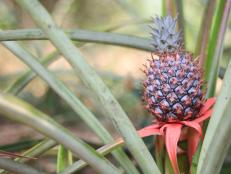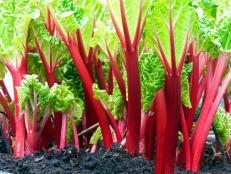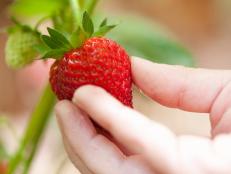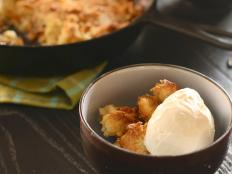How to Can Peaches
The deliciousness goes on and on when you put up your peaches for cobbler or other treats.

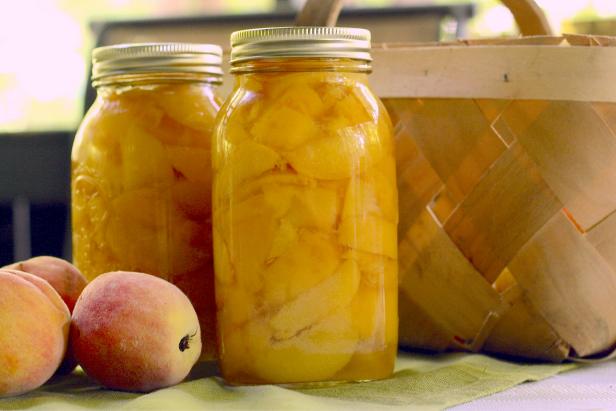
The peaches are in! I love going to the farmers' market, with their tables piled high with produce of all colors, and just as one favorite begins to fade away (see you next year, strawberries), another surfaces to take its place on the table and in my heart. I was thrilled to recently see mountains of peaches appear and immediately began calculating how much I needed to meet my freezing, canning, jamming and, of course, eating needs. There are endless applications for canned and fresh peaches, including ice cream, cobblers, pies, preserves and cocktails.
Vendors are very good about offering samples. I can’t imagine a better sales technique, and the first peach I tried was spectacular. Ready to go, I asked the requisite question: “Cling or freestone?”
Cling peaches and freestone peaches are indistinguishable at first glance, but for home canners the difference is an important one. The flesh of a cling peach holds fast to the pit, whereas the pit of a freestone can be removed cleanly and with little effort. If preparing peaches for any use other than enjoying as a hand fruit, the freestone is a clear winner as it can save significant time in preparing large amounts of fruit for preservation.
That first peach of the season turned out to be a cling peach, as did every other peach I tried that day. Cling peaches are ready for harvest just a touch earlier than my preferred freestone. I settled for just half a dozen to tide me over that day and returned this week, just in time for the arrival of my chosen peach. Worth the wait.
I tend to prefer freezing peaches to canning, but there’s only so much space in the fridge and canning is a great way to preserve the harvest to get through the year without losing that valuable freezer real estate. Preparation of the fruit is nearly the same, but when canning peaches, the fruit must be packed in a sugary solution to make sure everything stays peachy as the months tick by. You may notice grocery store canned peaches are labeled as “light” or “heavy" syrup. The home canner has the same choice, and there is some advantage to being able to control the amount of sugar you use (I’m a “light” man myself).
If you have a bumper crop of peaches, be it homegrown or market fresh, canning them is an easy way to make them last all year long without buying a second (or third) freezer. Here’s how to do it.
Syrup
Peaches must be packed in sugar syrup or fruit juice to help retain their color, flavor and structure. I tend to avoid the overly sweet and use a light syrup, but some prefer a sweeter profile. To make canning syrup, combine sugar and water at a ratio of 1:3 for light syrup or 2:3 for heavy syrup in a saucepan. Bring to a boil, then reduce to simmer until ready to use.
Preparing Peaches
Loosen skin by blanching peaches, dropping a few at a time into a pot of boiling water for 30 seconds then transferring immediately into a bowl of ice water to suspend cooking. Skin will be loose and will slough off easily. Be sure to use peaches that are fully ripe or skin may not come off when blanched.
Once skin is removed, cut peaches into halves, quarters or chunks and drizzle with lemon juice to prevent browning.
Packing Jars
Fill sterilized quart jars with peaches, leaving half an inch of head space. Pour prepared sugar syrup over peaches to cover completely and seal jars with lids and bands (do not overtighten).
Water Bath
Process by submerging jars fully in a bath of boiling water 30 minutes (or up to 40 minutes in high altitudes). Remove and let rest until completely cooled. You may hear a satisfying ping as the lids buckle to complete the seal. This is the comforting sound of success.
Storing
Be sure to label jars with the canning date and then store in a cool, dry place. Canned peaches will keep up to one year without loss of flavor but may be used beyond that time.






